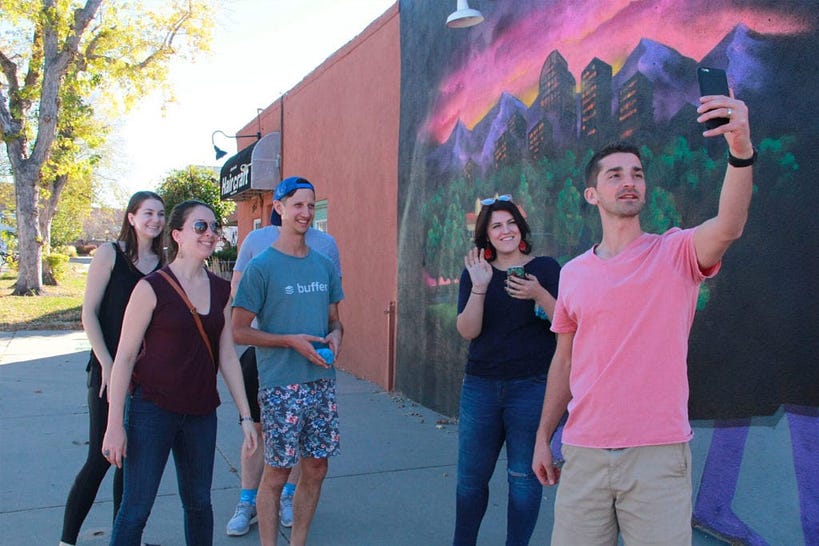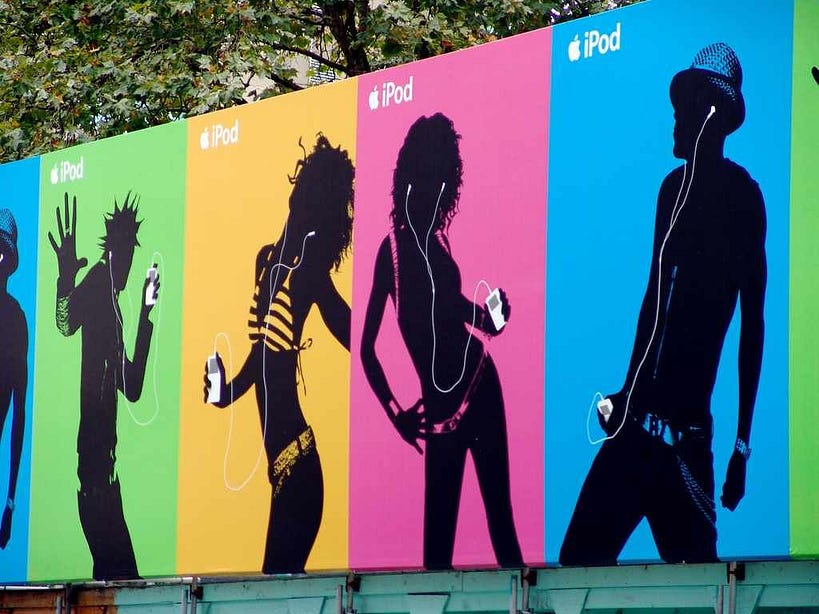Signaling via Brands
Why did the Lannisters always pay their debts?
Lannisters knew the value of a powerful brand. If you were a financier in Westeros, you’d feel assured while lending to Lannisters, because of their brand of being a reliable borrower. Lannisters never forgot to signal this virtue.
I don’t nod my head in agreement when people bash Instagrammerspositioning themselves the best they can using wonderful pictures, actively creating a social image of themselves. They are social-signaling.
Crafting your social identity via signaling on Instagram. Photo by Buffer
Signal as Shovels
So much of a social person’s life in 2019 depends on his/her social positioning. Instagram is a new medium providing a low-entry-barrier platform to the old need of signaling in the society. Isn’t it natural to see an explosion of social-signaling on it, then ?
There are four type of signaling I’ve identified & witnessed in our society.
- Abundance — luxury, lavish spending, seeking exclusivity with veblen goods — I’ve more.
- Authority — title, power in hierarchy — I matter.
- Promise — using accomplishment, accreditation — I’ll matter more. (startup-pitches, stock-teasers, tinder-bios)
- Virtue — academia, charity-fundraisers — I’m different(in a way that makes me better).
Signals are the building blocks of brands. Personal brands are made up of signals that constructs a social identity as well as a self-identity.
For constructing a distinct identity perception, you needs to send out distinct signals on countless ambiguous domains where we make life-choices. What kind of a traveler you are seen socially as, is determined by the kind of life-choices you post on Instagram. Whether it is a picture of a mountain trail or that a luxury resort pool-party, you’re making a life-choice.
When you express your life-choices, they imply(or expose) the corresponding identity attributes that enabled(or influenced) those choices. These implied associations are what humans use to judge other humans in the society. This is called anchoring effect in psychology.
Signaling is an attempt to reverse-engineer & hack this judgment process by providing examples of life-choices that imply the desired identity attributes.
The association between a certain identity attribute & a life-choice is however, malleable & evolving. For example, a clean-shaven face(life-choice) would make a young man look handsome(identity attribute) in late 1990s. Two decades later however, a stubble is the most common life-choice associated with an handsome young man.
Advertising found its existential purpose in the act of transforming these malleable associations to a version that’s favorable to the brand employing it.
Being a customer of a brand is a distinct life-choice, i.e. you make the life-choice of using a certain brand: Gillette razor or a Dollar Shave Club or a Harry’s. If that brand is associated with a particular identity-attribute culturally, you’ve associated yourself to that as well.
Starbucks recognizes the need for social-signaling & is the perfect signal-shovel-seller.
By shifting the load of hard work required to establish strong associations (between a distinct identity-attribute & the life-choice) on to the company, advertising flashed out an irresistible offer to the consumers: “Signal strongly that you’re X without a need to do the hard work. All you have to do is buy our brand’s product”
They did this by associating a certain identity-attribute X to their brand & making that association ubiquitous & commonly accepted in the social culture. Kevin Simler calls this strategy cultural imprinting in his blog Ads Don’t Work That Way.
In simple terms, simply carrying an I-pod in 2008 would signal that you’re different in your social circle, because the hard work for that association to be culturally-accepted (or being in common knowledge) was already taken care of by Apple’s advertising.
‘cultural-imprinting’(as Kevin Simler calls it) of i-pod user’s social image
Another example: Smoking a Marlboro cigarette automatically signals that you’re manly, decisive & adventurous.
This, however, was not always the case.
In the 1920s, the cultural perception of filter cigarette was it being ladylike(this was influenced by earlier cigarette advertising to appeal to the mass market & sell to women).
But if as a smoker in 1920s, you were smoking a cigarette that ladies smoke a lot, that doesn’t signal that you’re manly. The need for this signaling (that you were manly) was well recognized & fulfilled by the advertisers of Marlboro who re-positioned the brand to manliness: with sub-attributes like fearless decisiveness & adventure.
This was done by bringing a manly figure to embody the Marlboro brand & hence-after the iconic Marlboro Man was born.
Marlboro’s sponsoring of motorcycle racing championships & Formula car racing events serves the core purpose of reinforcing the association between using Marlboro brand(life-choice) & manliness(identity-attribute).
Interesting Fact: For the same campaign, Chicago advertiser Leo Burnett had lined up more manly figures like sea-captains, weightlifters, war correspondents & construction-workers which were to be tested following the the cowboy. However, the cowboy became super-successful & lifted Marlboro’s share from less than one-percent to becoming the fourth best-selling brand. Hence, the company stuck with the cowboy, dropping the rest of the planned figures.
Coming to 2019: In the age of unlimited attention-hungry media-sources, the consumer is forced to choose what(& who) to pay his attention to.
He (mentally) shortlists media-sources that he perceives are worthy of his attention.
Brands crave to be on that shortlist.
Higher the purchasing power of the consumer, more the number of brands clamoring to get on his attention-worthy shortlist.
His attention-worthy shortlist usually allows for newer players to be granted a chance to impress, but the evaluation bar is higher to be knighted as long-term attention-worthy.
Aware brands make the optimal use of that precious limited-time slot granted by the consumer to impress him. Impressing a consumer has gotten harder along with the increasing number of available choices to him.
While, lazy brands try the pushy-pushy method & throw their chance down the drain, Smart brands position themselves as a sunflower to the bees.
This is where signaling comes in.
Signaling that you’re long-term attention-worthy is not an easy task for a brand in 2019. Brands can do it by signaling that they are:
- Provider of Value — useful products, problem-resolving policies.
- Trustworthy — here-to-stay, social proof via credible testimonials & associations with known names.
- Exciting — new, ‘cool’, not-outdated.
- Caring — of my needs & beliefs.
If you haven’t already realized, these four signals are the brand-suited manifestations of the four core status-signals I listed in the beginning.
However, most potent advertising known till date is cultural imprinting or in simpler words, **being the ‘shovel-seller’ to the unending signaling-rush.
Own the Feeling ?
In my experience as a brand-copywriter, I read & hear the phrase ‘Sell the Feeling’ more than often.
It is generally accepted that any brand aiming to be long-term attention-worthy to their niche market should decide which one feeling it’s purveying & then own that feeling for its target customer.
Here’re some examples of smart brands in the pursuit of this:
- Busch Beer — Refreshing
- Coca Cola — Happy
- Dove — Beautiful
- Product Hunt — Serendipitous
- Lamborghini —Abundant
- Marlboro — Manly
- MAGA(Trump) — Proud
- FedEx— Assured
- Wikipedia — Smart
- Nike — Cool
- Twitter — In-the-know
- Apple — Different
The true north star for a brand, I believe is to be so well associated with that one feeling socially that the brand becomes almost synonymous in the cultural perception, to that feeling.
Branded products are signal-shortcuts or as I like to call them, signal-shovels.
Brands, as an extension are signal-shovel sellers.
Signaling is not just for social-identity building. It is also done to one’s self to construct one’s self-identity in the same way as constructing the social-identity.
This is why an Apple customer believes she’s different even if she’s using I-pad sitting in her home alone.
Razors are not a social product. Shaving is a private activity. They are not used in spaces with the opportunity of social signaling unlike a car or a watch. Why then, a razor brand Gillette, is trying to become a signal-shovel seller ?
It is because signaling is not limited to social, Gillette’s controversial ad in Jan 2019 targeted customers who want to buy signal-shovels that will be used for constructing their self-identity. The signal that Gillette attempted to offer was the virtue of ‘being a responsible man intolerant to bullying & discrimination’(how successful was Gillette’s execution of presenting that particular virtue-signal offer is debatable).
As signaling is naturally a hidden act, both advertisers and consumers like to complete this ‘unspoken’ transaction of signal-shovel(s) without bringing it to the overt-conversation or even to their own conscious thought-process.
Back to Writings page
My Newsletter: Daybrew's Note
Join my newsletter to stay updated with what I'm working on:



